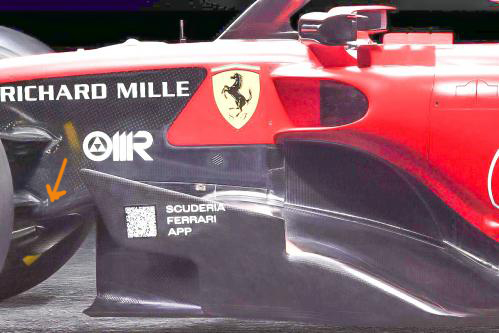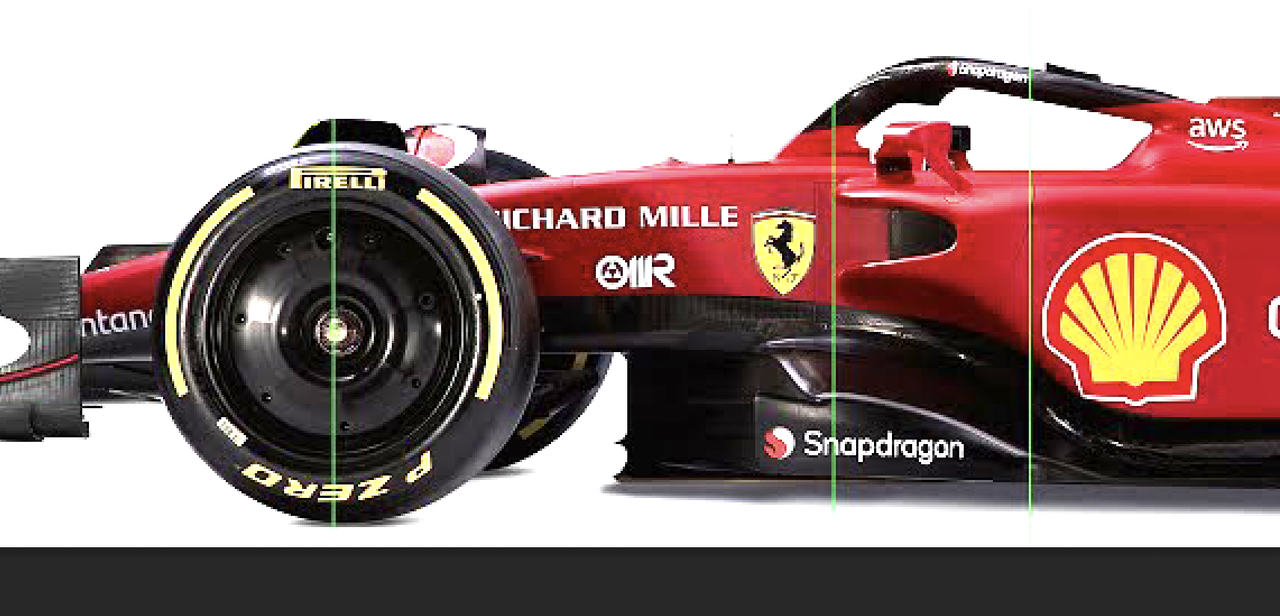What no one seems to have noticed is that the radiator inlets are as high as possible allowed by the regulations! The cooling louvres are placed differently what definetely means that there were significant changes to the cooling system. There are now two different units of cooling louvres with an additional vertical slot. This indicates that great care has been taken to divide and optimally distribute the different flows of cooling air. The concept introduced last year is obviously being taken to the extreme, because last year it was found that there were no problems in this regard. The cooling inlets are also visibly smaller, which means smaller radiators, which is not only an advantage aerodynamically, but also in terms of weight. This concept in terms of cooling allows superior airflow to the rear wing/beamwing unit as the airbox and engine cover are extremely narrow and low. The small aerodynamic parts added near the cockpit will further improve this, which ultimately all benefits the diffuser and underfloor, as the rear wing and beamwing unit "drives" the underfloor and diffuser. The airbox was made even smaller, really taken to the extreme, to gain an even bigger advantage in the performance of the rear and beamwing. The "horns" were also further refined in relation to that goal obviously. From the rear it looks like the gearbox is narrower and they now seem to have two "baskets"/two separate parts at the front-breaks, not one like last year and what was one of the weak points in terms of tyre degradation. Together with the completely new front suspension and Multilink rear suspension, this should hopefully make tire problems a thing of the past.
Unfortunately, there's not really anything meaningful to see from the underbody and diffuser, but it's clear that the intake, just like the sidepods, have been removed from the front wheels. This may cost some downforce, but it should make it more stable because it gives the airflow coming around the front wheels more distance in which to allign itself with the floor inlets. The retained high pressure zone under the sidepods makes the floor at the front corner of the side work harder and helps to "kick" the front wheel wake more outboard earlier.
The even more center loaded and more outwash producing front wing, which is now only attached to the second element of the front wing, with a 'free' first element to improve front downforce and the other small modifications such as to the intakes of the underbody and the "new" T-tray, one thing must be stated quite clearly - the SF23 is an impressive evolution of a concept that was already the fastest in terms of pure speed in 2022. The attention to detail with which the car was further developed in many areas is impressive, as is the fact that they obviously tried to eliminate the weaknesses. If it delivers what it promises based on the new developments/improvements - then 2023 will be a very good year for Ferrari!








